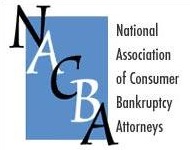
Don’t overlook in rem liability when scheduling creditors.
These phantom creditors often waft through the lives of debtors. The client may not see them, but as debtor’s lawyers,we must pull those creditors into the light.
Phantom creditors may have no claim against the debtor personally, but nonetheless, need to be scheduled.
Liabilities of property
In rem is nifty-sounding Latin, the original language of Anglo-Saxon lawyering.
It’s defined as an action “against a thing”. It concerns the property, rather than the person.
In bankruptcy we encounter it most often when a creditor seeks relief from stay in rem. Generally, the creditor seeks to make the ordered relief follow the “thing”. It comes up when the property has been transferred from hand to hand, each new hand filing bankruptcy to get the automatic stay.
But more generally, looking at the client’s holdings, in rem, reminds us that “creditor” includes entities with rights in the debtor’s property, even in the absence of personal liability.
Section 506 gets wordy as it describes a secured claim. It is one where the creditor has rights in the debtor’s interest in property. Note it doesn’t speak at all about personal liability.
And that’s where our clients can get hung up in providing the information necessary to prepare accurate schedules: they think only in terms of debts they are liable for.
In rem in the real world
Secured claims for which the debtor had no liability popped up in my practice lately when the debtor had been deeded an interest in a home already subject to a mortgage lien.
The client had not signed the note nor the deed of trust that secured it. Yet the obligation encumbered the client’s interest in the home, and thus had to be added to the list of secured claims in the case.
Another example is the client with a prior bankruptcy discharge which may have discharged personal liability for a debt, but the lien on car or property survived.
Expand your client interview
We’ve talked before about language-induced misunderstandings between client and lawyer.
Make sure you have questions and phrases that will flush out any secured claims for which the client isn’t liable. Or do a lien search to see what the public record says about in rem liability.
Image courtesy of Flickr and Sebastia Giralt.







